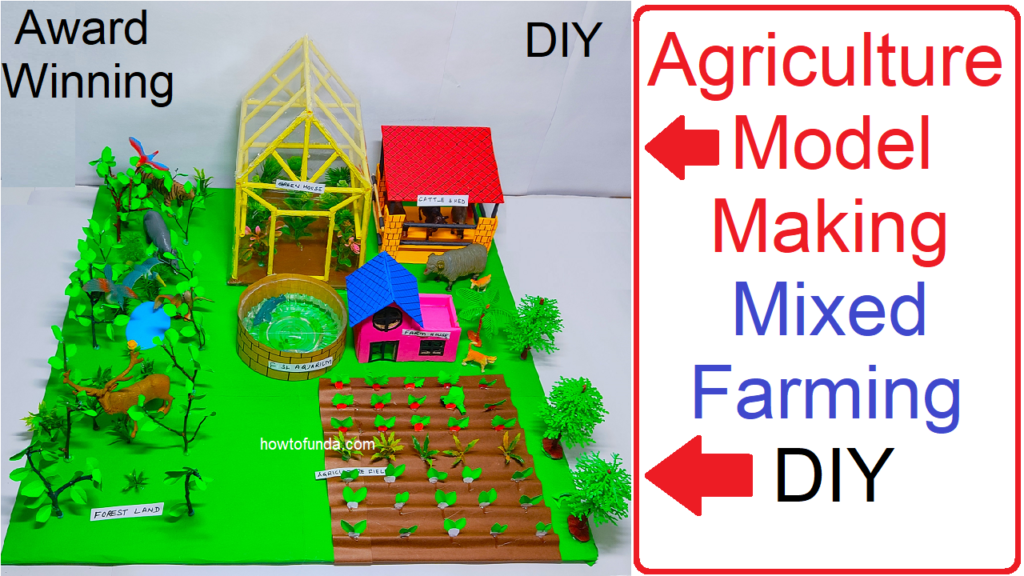Composite agriculture, also known as integrated or mixed farming, involves the combination of different agricultural practices within a single farming system.
This approach seeks to optimize the use of resources, increase productivity, and enhance sustainability by integrating various components such as crops, livestock, aquaculture, agroforestry, and other agricultural activities.
Here’s an introduction to composite agriculture:
- Diversification of Activities:
- Composite agriculture goes beyond monoculture (single-crop farming) and involves the simultaneous cultivation of multiple crops and the integration of livestock, poultry, aquaculture, and agroforestry within the same farm.
- Components of Composite Agriculture:
- Crop Cultivation: Growing different crops together, often in a rotation or intercropping system to maximize land use and reduce the risk of pests and diseases.
- Livestock Farming: Integrating livestock such as cattle, goats, or poultry to utilize organic waste for manure, pest control, and additional income.
- Aquaculture: Incorporating fish farming or shrimp cultivation in ponds or integrated systems to diversify income sources.
- Agroforestry: Integrating trees or shrubs with crops and/or livestock to provide additional benefits such as shade, windbreaks, and improved soil fertility.
- Apiculture: Including beekeeping for pollination and honey production, promoting biodiversity.
- Benefits of Composite Agriculture:
- Optimized Resource Use: Utilizes available resources more efficiently by creating symbiotic relationships between different components, such as using crop residues for animal feed.
- Risk Mitigation: Diversification reduces the risk of crop failure and income loss associated with dependence on a single enterprise.
- Enhanced Productivity: Synergies between different components can lead to increased overall productivity.
- Improved Sustainability: Combining various farming practices helps maintain soil health, reduce environmental degradation, and enhance long-term sustainability.
- Economic Resilience: Multiple income streams provide economic stability and resilience against market fluctuations.
- Techniques and Practices:
- Crop Rotation: Alternating the types of crops grown in a specific area over time to improve soil health and fertility.
- Intercropping: Planting two or more crops in close proximity to maximize space utilization and nutrient uptake.
- Silvopasture: Integrating trees or shrubs with pasture for livestock grazing.
- Aqua-ponics: Combining aquaculture and hydroponics, where fish waste provides nutrients for plant growth.
- Cover Cropping: Growing specific crops during fallow periods to protect the soil and enhance fertility.
- Challenges and Considerations:
- Management Complexity: Integrating various components requires careful planning, management, and monitoring.
- Knowledge and Skill Requirements: Farmers need a diverse set of skills and knowledge in different agricultural practices.
- Market Access: Diversified production may require access to various markets for different products.
Creating a comprehensive agriculture project working model with a greenhouse, forest, cow shed, agriculture field, village house, and fish pond involves integrating various elements.
Below is a step-by-step guide to help you build this multifaceted model:

Materials:
- Large cardboard or wooden base
- Colored paper or cardboard sheets
- Transparent plastic sheets
- Craft knife or scissors
- Glue or tape
- Popsicle sticks or wooden skewers
- Small containers for planting
- Potting soil
- Small plants or seeds
- Miniature farm animal figurines or images
- Model trees or craft materials for the forest
- Model house or craft materials for the village house
- Blue paper for the fish pond
- LED lights
- Batteries and battery holder
- Pebbles or stones for decoration
- Paints and brushes (optional for decorating)
Step by Step Agriculture working model making Instructions:
- Prepare the Base:
- Use a large piece of cardboard or wood as the base for your model. This will serve as the foundation for all components.
- Create the Greenhouse:
- Follow the instructions from the previous response to create a greenhouse using transparent plastic sheets, cardboard, and LED lights. Place it on one section of the base.
- Build the Forest:
- Use model trees or craft materials to create a small forest area on another section of the base. Add greenery and details to represent a diverse ecosystem.
- Construct the Cow Shed:
- Use cardboard to create a simple cow shed. Cut out the shapes for the shed and the roof. Attach popsicle sticks or wooden skewers as support beams. Add miniature cow figurines or images inside the shed.
- Design the Agriculture Field:
- Cover a section of the base with green or brown paper to represent an agriculture field. Glue miniature crops made of colored paper or use real soil and small plants. You can also create rows using popsicle sticks.
- Include the Village House:
- Place a model house or create one using craft materials on a designated spot. This represents a typical village house.
- Add the Fish Pond:
- Cut out a section of the base and cover it with blue paper to represent the fish pond. Use pebbles or small stones to create a border. You can add small fish figurines or create fish shapes from colored paper.
- Install LED Lights:
- Attach LED lights inside the greenhouse, cow shed, and village house to simulate lighting conditions. Connect the lights to a battery holder with batteries.
- Plant Seeds or Seedlings:
- Plant seeds or small seedlings in the greenhouse and agriculture field. Ensure that the chosen plants are suitable for indoor or greenhouse cultivation.
- Decorate and Customize:
- Use paints or additional craft materials to enhance the visual appeal of each component. Add details like flowers, pathways, or fences.
- Assemble and Display:
- Arrange all the components on the base to create a cohesive and visually appealing agriculture project model.
This comprehensive model provides a representation of various elements of agriculture, from plant cultivation in the greenhouse and agriculture field to animal husbandry in the cow shed, all within a rural setting with a village house, forest, and fish pond.
It serves as an engaging way to understand the interconnected aspects of agriculture and rural life.

